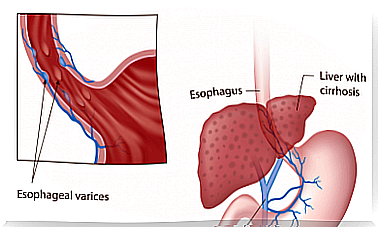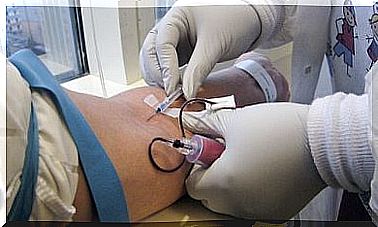Opioid Treatment For Cancer Pain
Cancer pain is that which appears in people with cancer. It is an intense and disabling pain that can arise due to the pressure of the tumor itself, due to the treatment against it or due to alterations in the immune system, among other causes.
Today, cancer is one of the most important health problems in our environment. In Spain, an estimated 90,000 people die each year from cancer. Furthermore, of all cancer patients undergoing treatment, an estimated 40% experience cancer pain.
Unfortunately, in the final stages of cancer, this pain appears in almost 80% of patients. This is a complex situation that is difficult to deal with. Each person responds in a way to a certain treatment and most of them are very powerful drugs.
However, currently, much progress is being made in this field and, little by little, new treatment guidelines are emerging. In this article we explain opioid treatment for cancer pain.
What is cancer pain treatment?
As we have already mentioned, cancer pain treatment must be individualized. That is, it must be specially adapted to each patient, since it depends on the type of cancer that is suffered, what is causing it and even the perception of pain of each person.
However, there is a general guideline for treating cancer pain based on its intensity. It is a scale that was determined by the World Health Organization. From less to greater intensity of pain, the following groups of drugs are used:
- Simple pain relievers, such as acetaminophen and non-steroidal anti-inflammatory drugs (NSAIDs): These are used in people with mild pain. The most used are ibuprofen or naproxen.
- For patients with moderate pain, the second treatment step is weak opioids : in this group we find codeine, tramadol or dihydrocodeine.
- When the pain is very intense, very strong opioids are used : the most used is morphine, but methadone or fentanyl are also used.

In order to classify pain, a good assessment of the patient is necessary. For this, the so-called pain scales are used. On the pain scales, scores are given to different aspects of pain to classify it somewhere between mild and excruciating.
Typically, in these people, pain occurs by more than one mechanism. Therefore, it may become necessary to combine several medications. It is important to be aware that, unfortunately, more than half of the patients end up needing third-tier drugs.
What are opioid drugs?
Opioid drugs are those that have been obtained from opium and that, in addition, act on brain receptors called opioid receptors. They are distributed throughout the central and peripheral nervous system.
What these drugs do is bind to these receptors and slow down nerve stimuli. Thus, by stopping the stimulus, it is achieved that the transmission of pain does not occur.
However, keep in mind that these drugs have numerous side effects. First of all, it is important to note that a large part of opioids, such as morphine, produce dependence.
Similarly, they can increase feelings of tiredness and weakness. Another risk is that they are associated with a depression of the respiratory system. Therefore, you have to be very careful with the dose and they should always be used under medical prescription.
What is the guideline for treating cancer pain with opioids?

Second step: weak opioids
As we have indicated, l will most frequently used drugs of this step are the tramadol and codeine. They can be administered in different ways: to delay their release or to act directly. They can also be combined with other drugs, such as NSAIDs.
In the case of codeine, for example, it is usually taken orally. At first, the patient can take 30 mg every 4 to 6 hours. However, it is not recommended that you ever take more than 60 mg every 4 hours. It should also not be used in patients with liver or kidney problems.
Third stage of cancer pain: strong opioids
These drugs are reserved for cases in which cancer pain is almost intolerable. The most used is morphine. This is because it can be used in many ways, such as subcutaneously.
Furthermore, morphine has no ‘pain-relieving ceiling’. That is, the more dose is administered, the greater its effectiveness. In fact, the dose limit is set by its side effects, since an overdose can cause death.
In conclusion
Opioid treatment for cancer pain is complex and must be chosen according to the characteristics of each patient. Therefore, it must always be a doctor who chooses it and decides what the pattern should be.









